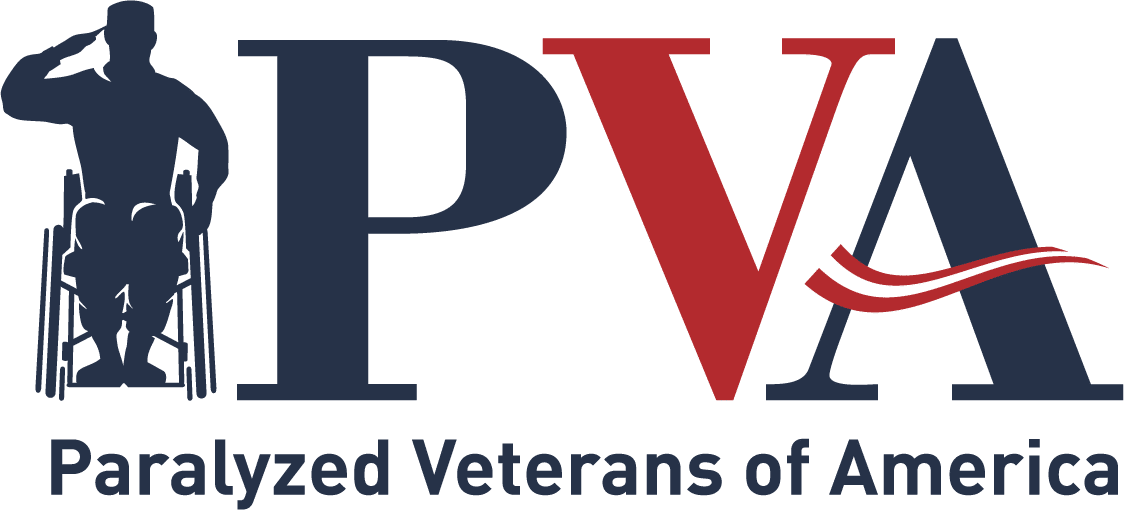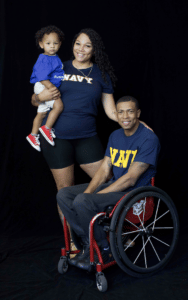Interview with Jim Sinocchi: Making Work and Travel Accessible
Posted By PVA Admin on October 27, 2021
October is National Disability Employment Awareness Month and the 35th anniversary of the Air Carrier Access Act.
PVA’s Veterans Career Program specializes in helping Veterans with significant disablities find meaningful employment, and our government relations department advocates tirelessly to make air travel safe and accessible for all.
We recently had a chat with Jim Sinocchi, Managing Director and Head of Disability Inclusion at JPMorgan Chase. Jim believes that organizations need to adapt in order to bring on more talented employees with disabilities. He also serves as Chair of the Air Carrier Access Act Federal Advisory Committee, of which PVA’s Associate Executive Director of Government Relations, Heather Ansley, is a member. More accessible air travel will of course intersect with accessible employment, which will help those with disabilities do their jobs better on a national and global scale.
“It’s about changing the culture. You’ve got to get the change agents in an organization.”
___________________________________________________________________
Tell me about your accident.
I was 10 or 11 years old, when I became a swimmer. I swam my way into a scholarship at Colgate University and then I went to work for IBM. I went to New York University for my Master’s Degree, and while I was doing all that I was the assistant coach of the city college swimming team.
We took the team to Puerto Rico on spring break. While body surfing, I broke my neck. The wave was stronger than I thought and it slammed me into the beach. I was 25 years old.
At the time you were employed by IBM, correct?
Yes. I spent 30 days in Puerto Rico and had two surgeries. IBM flew me home into New York University. They asked me to come back to work, one day a week until I could build up my endurance. I took up a job in technical publications and, 39 years later, in 2015, I retired as corporate director of marketing communications.
How did your injury affect your employment?
It took me about five years to get my head together in terms of recovery – to be able to start looking people in the eye again. I wasn’t angry about being a quadriplegic; I was sad, or even skeptical, and I was hard on myself. That’s what I had to get over.
I wondered if I could date again. I wondered if I could drive again. I wondered about a lot of things. And because of IBM, and a lot of help, I did well and I met my wife Maggie at IBM. We’ve been married for 33 years now.
And now you are with JPMorgan Chase.
I’ve been at the Bank going into six years here. My job is to make able bodied people comfortable with disabled people. In my organization everybody was great to me, but they didn’t know how to deal with a person like me. At the end of the day, you have to be comfortable with people who are different.
What would you tell employers looking to hire people with disabilities?
My strategy is the four A’s:
- Accessibility: How do you make your technology accessible? How do you make your buildings accessible?
- Accommodations: What do you give to people who are blind, deaf, mobility impaired, mentally impaired, to help make them whole with technology?
- Assimilation: How do you bring anybody into a business and make them part of your culture? How do you assimilate people into the common good?
- Attitude: What’s your view when you bring people in? Are you bringing in people because the ADA says you have to, or are you bringing them in because they have talent you can capitalize on?
But you have to get the systems in place.
It’s a change of concept for people. People don’t think disabled people can do things. But we’re finding that disabled people are innovative, because they have to be. However, disability inclusion is not easy, and you’ve got to be patient.
“How do you change the culture?” – I think that’s the hard part. You’ve got to get the change agents in an organization.
How have you been able to do that at JPMorgan Chase?
It’s very simple: we will hire people with disabilities, number one, and number two, we will abide by the ADA. We are trying to cut through all the bureaucracy. I basically threw out the bureaucracy lingo and got right down to brass tacks because when I got hurt it was all in the regulations, and that’s great – but who reads the regulations, and how do you make someone’s life better?
You’ve got to cut through the statutes and the laws and all that. But I am not putting anybody in a job they’re not qualified for. If you have a qualified person with a disability, they have to get the same judgment evaluation that an able-bodied person would get. And we’ve hired about 1000 people a year since I’ve gotten here.
It’s not just a program, it’s an infrastructure. It’s not just on paper, it’s executed.
I love that you use the word infrastructure, because it’s not just an initiative, this is a solid foundation that you’re putting in.
The structure of the company has changed. I’m like a coach. I’m coaching managers, I’m coaching executives. My job is to work with technology, real estate, health and medical, the sales team, etc., to get them all comfortable. To tell them that they are going to meet people with disabilities, they are going to see people with disabilities, and they may even work for people with disabilities. I work with the branches in our 50 states on how to make things accessible.
It can be simple things like at the Bank, a woman called in, and said, Jim my office is on the West side of the building, but the only accessible bathroom is on the East side of the building and the walk is long. I said “Well we’ve got to build another bathroom,” so I called up real estate.
I hope you get the simplicity of it. I don’t go in and talk gobbledygook. I communicate ideas in a way others can understand. If you need a ramp, you put in a ramp. You’re not trying to remember which section of the ADA says what.
Talk to me about your work as Chair of the ACAA Federal Advisory Committee.
The goal of this whole program should be not only to better the services, but to let us ride on planes in our wheelchairs. We have made a lot of progress here with a lot of cooperation, but we haven’t gotten to the goal post. The goal post is allowing us to fly on airplanes in wheelchairs. I have flown before on my wheelchair in a power chair, but then the airline stopped it. I know it’s possible. They bolted my chair down, I minded my own business I wasn’t in anybody’s way.
Would you say cost is the main factor for airlines when it comes to creating reasonable and equal accommodations?
They claim they will lose some money with seats. In terms of the chairs, a wheelchair is about a chair and a half on a plane, so at a minimum if you put in two seats with wheelchairs, you lose about a seat. But I’m saying like that’s peanuts, given what you make in profit. This is a billion dollar industry, and I believe if you do it right and design it right you’ll have more disabled flyers coming with you. Families with disabilities travel in packs. I’ve flown since I’ve broken my neck – so I asked them, “why do I have to pay for three people in order to travel safely?” You break equipment, you drop people, you hurt people. What got me really mad was they want to redesign the cargo bay to put in a wheelchair, but not redesign the cabin.
Do you believe Covid opened up more opportunities for employers to hire people with disabilities, when they know they can work remotely from their own home, on their own schedule, with their own equipment?
I would say that that Covid attacked all of us in different ways. But there is still skepticism about people working from home. And the other thing is, you can work from home in certain jobs but sometimes you have to get out there and rub shoulders with people. I’ve got to go out and meet people. To do global work I need access.
And through your work as Head of Disability Inclusion, you’ve seen the culture shift.
Once you get the dialogue going, you’ll meet people who say, “I have a child who is disabled,” or “My grandma’s disabled.” HR told me a couple of years ago that the bank was feeling smaller because of my work. So when I leave this planet, I hope that JPMorgan Chase has a culture that’s very different than before I got here.
That would be a beautiful legacy to leave.
That’s right, and that’s what I tried to do. I did what I know. This is a passion for me.
___________________________________________________________________
Paralyzed Veterans of America’s Veterans Career Program offers high-touch, one-on-one career support to PVA members, their family members and caregivers, and all Veterans with disabilities Visit our website: www.pva.org/Veteranscareerprogram to learn more.
To sign a PVA petition requesting Congress pass the Air Carrier Access Amendments Act (H.R. 1696/S. 642) to ensure new airplanes are built using accessibility standards, easily removable barriers are eliminated on existing airplanes; enforcement options are improved; and overall safety during air travel for disabled veterans and all people with disabilities is greatly enhanced, visit: https://www.votervoice.net/PVA/Petitions/2969/Respond

